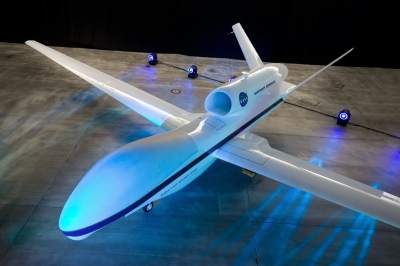NASA’s unmanned Global Hawk aircraft has successfully completed four science flights over the Pacific Ocean.
According to Northrop Grumman spokesperson Carl Johnson, the GloPac mission “revolutionized” the collection of data in the stratosphere – with some flights reaching up to 65,000 feet.

“Fitted with 11 science instruments, Global Hawk acquired and transmitted data that has never before been accessible through either manned flights or satellites. Flights during the GloPac project ranged from north of the Arctic Circle, over polar ice, down to Hawaii near the equator,” explained Johnson.
“[The Northrop-manufactured UAV] completed 82.5 flight hours, with one particular flight lasting 28.6 hours, eight hours of which was spent north of Alaska over the polar ice. Additionally, this was the first time a Global Hawk unmanned air vehicle has flown as far as 85 degrees north latitude.”
Johnson also noted that the flights were designed to address several scientific objectives, including validation and collaboration with NASA earth observation satellites such as Aura.
“The GloPac payloads collected atmospheric data in the same location at the same time as Aura and other EOS missions to compare and combine results,” he said.
The Global Hawk UAV will be redeployed later this year by NASA to examine hurricanes and their complex formation process.






